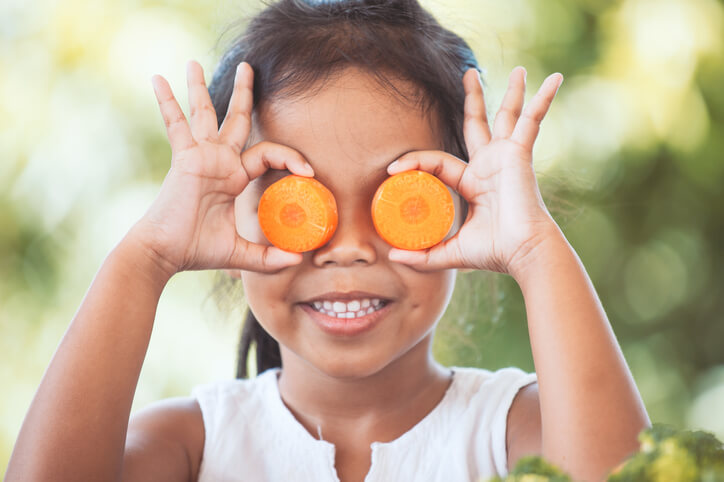Helping Your Child Develop Healthy Vision
Approximately 547,083 American children struggle with visual complications. As a parent, you can try a variety of techniques to help your child develop healthy vision. This includes ensuring your child consumes a nutritious diet, carries out visual exercises and goes for regular pediatric eye checkups. Here are other tips and information to help you ensure their eyesight develops properly.
1. Encouraging a Healthy Diet to Develop Good Vision in Children
It’s never too early to start taking care of your child’s eyesight. Eating healthy during pregnancy can increase the chances of your baby having good eyesight when they’re born. Once your baby is old enough to eat solids, you should provide it with nutritious foods such as fruits, vegetables, nuts, and fish because they are rich in:

- Vitamin C
- Vitamin E
- Zinc
- Omega-3 fatty acids
- Lutein
With the right diet rich in vitamins and antioxidants, your child’s eyesight will strengthen over time. This also means they could have fewer chances of becoming dependent on visual aids.
2. Eye Exercises for Strengthening Vision in Children
Young children don’t just have to eat right, but they should also be encouraged to carry out regular eye exercises to ensure their optical muscles are put to good use. Good vision can be developed just like any other skill, such as walking and talking.
Try giving your child age-appropriate toys that assist in visual development. These toys should be placed 8 to 12 inches away so that they can focus on them with their eyes. You can also walk around the room while holding the toy or talking to your baby. This will encourage them to follow you with their eyes.
Simply allowing your baby to hold and play with multi-colored toys is enough to promote their eye muscle development. Crawling, playing with building blocks, and finger painting are also great eye exercises as they encourage hand-eye coordination.
3. Get Regular Pediatric Eye Checkups
Getting your child’s eyes regularly tested by an optometrist plays an important role in ensuring their eyesight develops properly over time. If the child is old enough, talk to them about what to expect before the checkup. Let them know that the eye specialist will ask them to identify objects and letters. The primary purpose of pediatric eye checkups is to look out for potential visual complications, such as:
- Nearsightedness or myopia
- Farsightedness or hyperopia
- Astigmatism
- Amblyopia
During eye exams for children, we are looking for eye alignment and how they react to light. These help eye doctors see how their development is progressing (or not). The best way to find issues, and get preventative measures in place, is to see an eye doctor regularly.
See Our Pediatric Eye Care Doctor
At Looking Glass Optical, we have a pediatric optometrist on board who can give your child a thorough checkup to determine their visual well-being. We also take the time to help children understand what we are doing and the importance of eye health. Contact us at Looking Glass Optical to book a pediatric eye test today. You can also learn more about children’s eye health on our blog. We have a whole section dedicated to pediatric eye care.
Share
